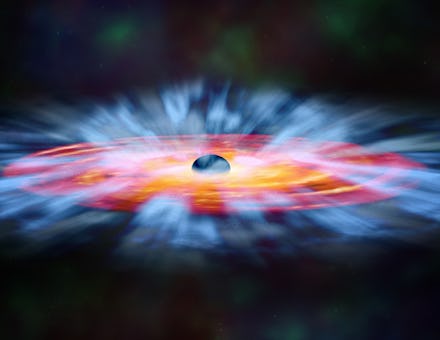We Might Be Able to Predict When Black Holes Form Out of Neutron Stars

If you're obsessed with black holes, you'll want to keep reading: Astronomers just got one step closer to understanding them.
A team from Germany says they've found a way to calculate the maximum mass a neutron star can grow to before it collapses into a black hole. That means we might be able to predict when and where a black hole will form.
When really massive stars near the end of their life, they explode and leave behind a bundle of neutrons called neutron stars. Neutron stars are one of the densest objects in the universe that we know about. They're up to twice the mass of the sun, but all that mass is squeezed into a clump that spans just a few kilometers.
"Matter is packed so tightly that a sugar-cube-sized amount of material would weigh more than 1 billion tons, about the same as Mount Everest," NASA explains.
When stationary neutron stars gain enough mass, they start rotating. A rotating neutron star can support more mass than a stationary one. But even rotating neutron stars have a mass limit. When they gain enough mass and enough rotational speed, they will collapse into black holes.
Previously, astronomers had no way to predict when this transformation would happen.
Now researchers behind this new study think they've found a way to calculate the absolute maximum mass a rotating neutron star can have before it collapses into a black hole. They can predict the mass simply by comparing it to the maximum mass in a corresponding non-rotating neutron star.
"It is quite remarkable that a system as complex as a rotating neutron star can be described by such a simple relation," Luciano Rezzolla, one of the authors of the publication, said in a statement. "Surprisingly, we now know that even the fastest rotation can at most increase the maximum mass of 20% at most."
This new study builds on a lot of recent data-crunching research that shows that neutron stars have a surprising number of "universal relations" that astronomers can use to compare them.
In this case, the answer has been there all along, we just needed to look at the data with a fresh perspective, Rezzolla told Universe Today.
In the future, astronomers might be able to use this research to predict when and where black holes will form.
h/t Universe Today